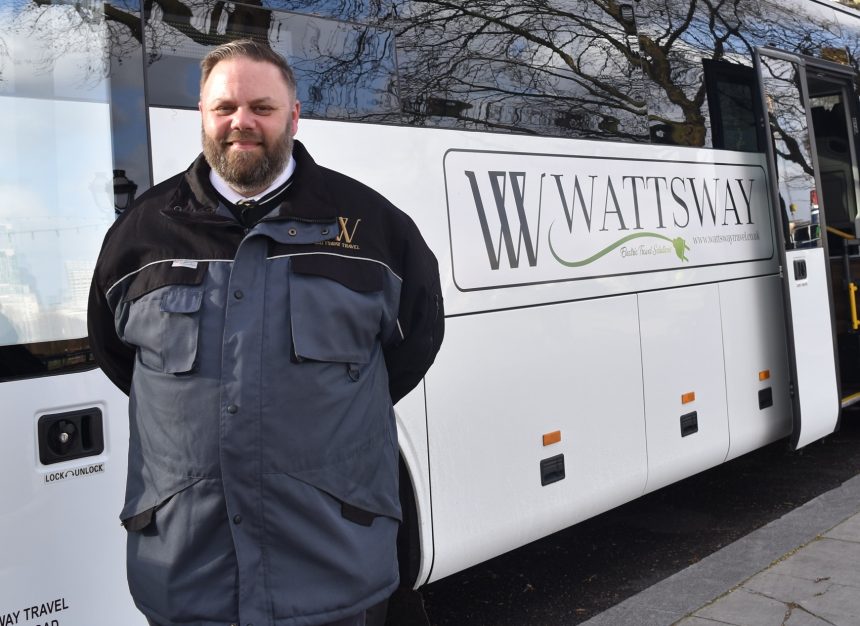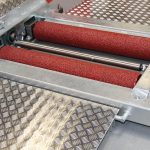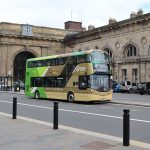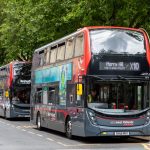Wattsway Travel was an early convert to battery-electric power in coach, taking delivery of two Yutong TCe12 low-height models from 2021. Those were justified by home-to-school contracts with private establishments that are willing to pay the necessary rate for zero-emission. The London operator has now taken its work in that field a step further with the arrival of a tri-axle GTe14, which is branded as the UK’s first electric touring coach.
Lots has already been said about use of zero-emission coaches on scheduled services with Ember and through trials with FlixBus partners. Much less clear so far is how those vehicles are integrated into a more typical coach operation where private hire and home-to-school work is at the fore. Trepidation exists among many members of that part of the industry.
But Wattsway Travel Director Mark Watts (pictured, above) – who founded the operation with a minicoach only eight years ago – is clear that for his business, electric is the future. That is a bullish tone to take, and Mark acknowledges that the zero-emission route in coaching is presently “not for the fainthearted.”
Many challenges remain to be overcome; he notes that a battery-electric coach is significantly more expensive than a like-for-like diesel at the point of purchase, while experience has taught Wattsway that – for now at least – charging those vehicles at depot is the optimum approach, with much still to be done on availability of public charging points.
But there is a growing group of corporate clients and, to a lesser extent, private hire customers in South East England that actively require zero-emission coaches, Mark says. He believes that their numbers will grow. Interest from schools is also accelerating.
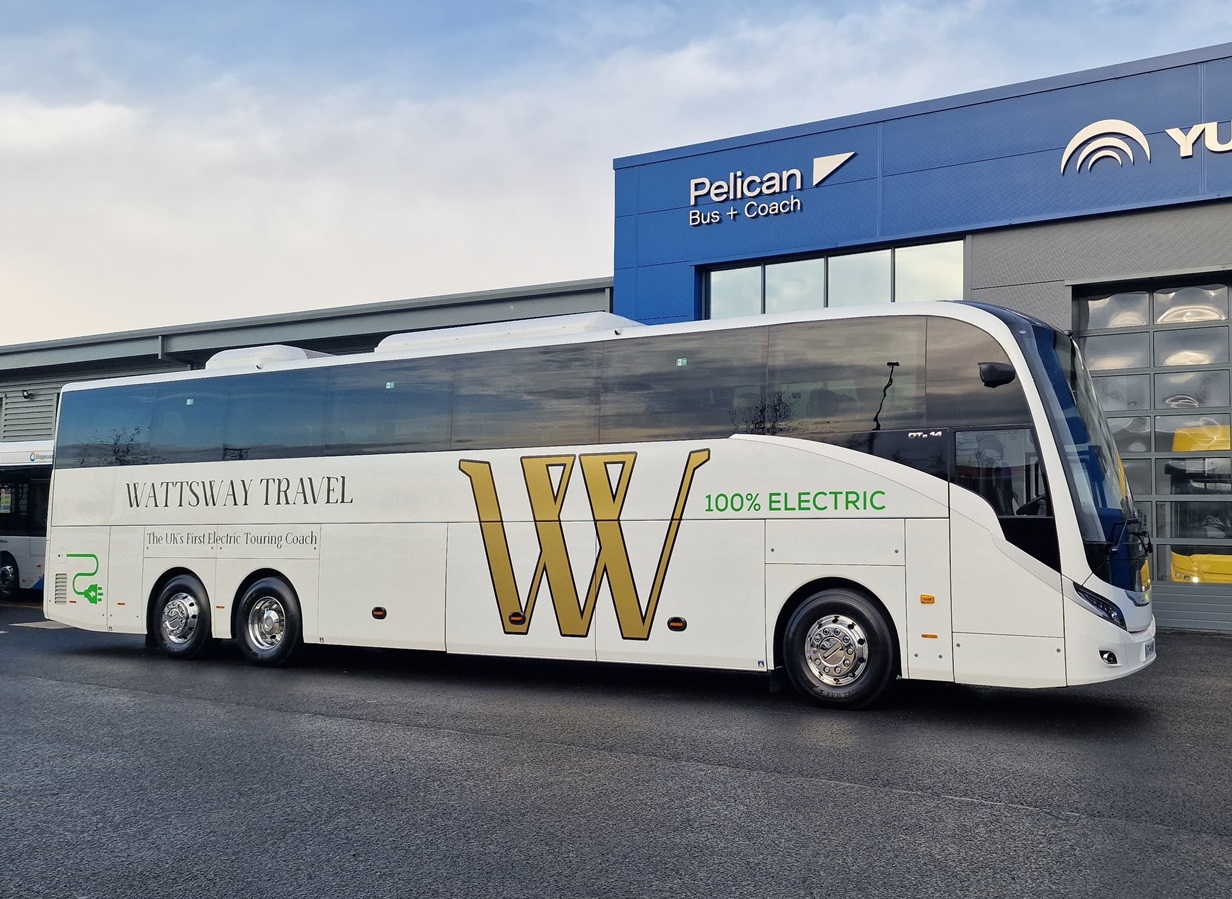
Battery-electric coach operation stacks up for Wattsway
Wattsway vehicles typically cover low mileages, often less than 100 kilometres per day. Battery-electric coach technology allows much more to be done between charges, and one line of thought from the bus world is that the benefit of lower energy costs for electric compared to diesel is best leveraged by working those fleets hard.
Mark takes a wider view of costs, however. While energy is part of the equation, he notes that a diesel coach is far from at its most efficient when in slow traffic. Maintenance expenses also factor heavily. Wattsway’s coaches spend a lot of time in central London at low speeds; Euro VI is needed there for diesel vehicles, and problems with particulate filters have been encountered where it is difficult for the exhaust to maintain temperature.
“I also recently needed to replace a variable geometry turbo (VGT) valve, at a cost of £1,600,” he continues. “I will never need to do that on an electric coach.” Difficulties with exhausts are exacerbated in London; it is impractical to carry out a forced regeneration at the roadside there.
Downtime is another consideration. Wattsway’s coaches often run seven days per week, and depot space means that the operator lacks capacity to hold spares. “I need vehicles that can operate day after day after day,” Mark explains. “When a diesel has a problem with a VGT valve or regeneration, it makes a problem for us.
“Experience with the two other electric coaches is that minor mechanical issues that can take a coach out of service for a day or two don’t happen, and that adds to the financial argument.”
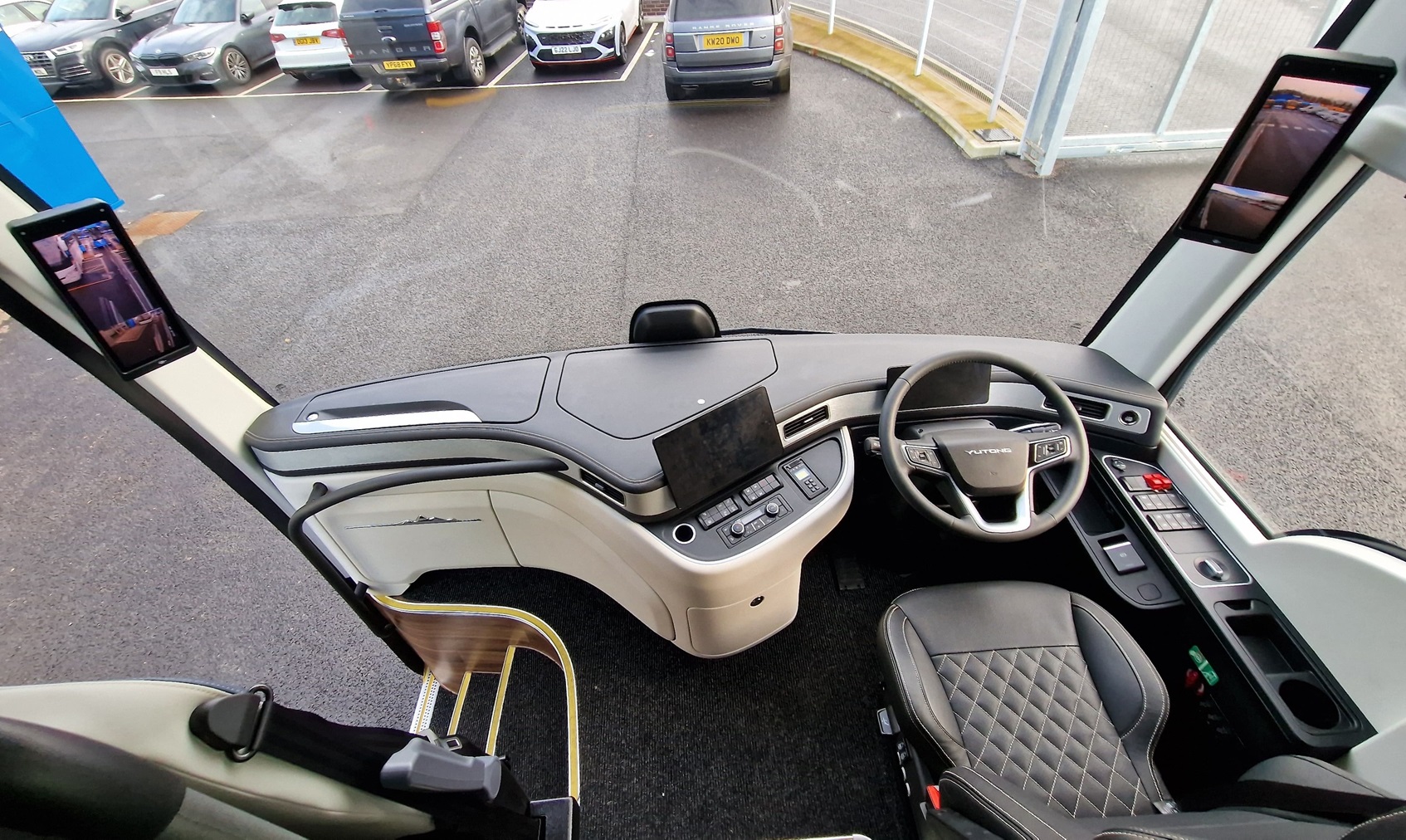
Long-term financial consideration is key to viability
The GTe14 delivered to Wattsway in early January is the same vehicle seen at Euro Bus Expo in November 2024. It has a second-generation dash layout that is tablet-based and departs from any convention in that area. The Yutong seats also draw positive comment.
PSVAR compliance is included, and the GTe14 will soon gain the necessary equipment – including screens for next-stop announcements – to comply with the PSV Accessible Information Regulations (AIR). Mark does not anticipate using the tri-axle on rail replacement services, some of which fall within AIR, but it will futureproof the vehicle.
That is not from a residual value point of view, however. Mark notes that long-term thinking is necessary with electric. For the GTe14, notwithstanding the purchase premium, he believes a saving of around £25,000 per year in fuel and maintenance costs will be forthcoming over a like-for-like diesel. The coach will see a full life with Wattsway; the vehicle and battery warranties provided suit that approach.
But why a tri-axle as a third electric coach instead of another TCe12? The pair of the latter model have worked very well for Wattsway, as has the backup and engagement from both supplier Pelican Bus and Coach and manufacturer Yutong. However, luggage space is key. Wattsway does a lot of airport transfers, particularly in the summer. Presence of a toilet is also important to some customers.
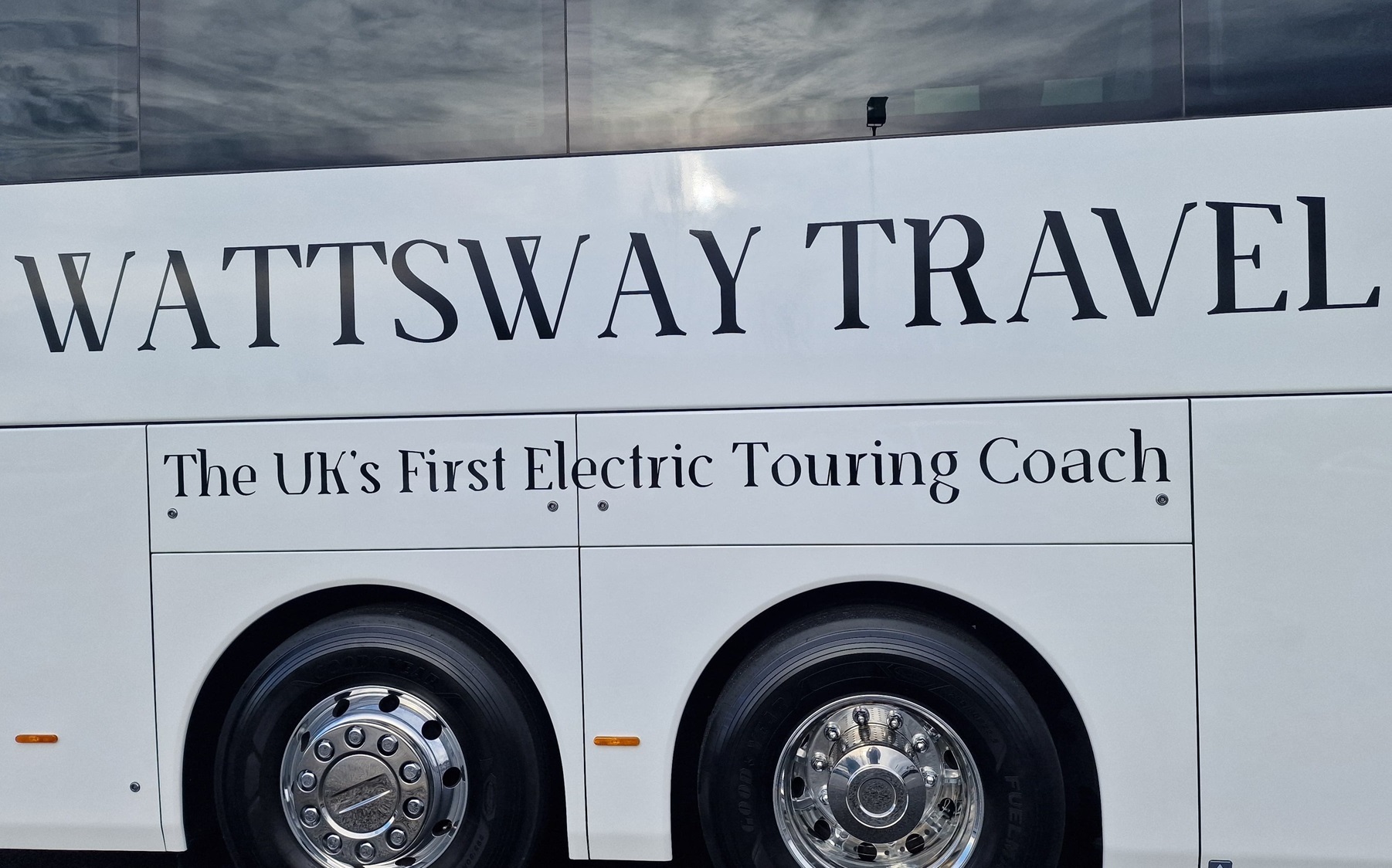
Learning curve on battery-electric coach charging
Upon purchasing its first battery-electric coach, Wattsway charged it at publicly accessible points. That was part of the original theory behind the vehicle in that Mark wanted to show how it was possible to use such coaches without needing to install depot infrastructure.
A change of mind was soon necessary, however. Use of a local service station was possible considering the TCe12’s modest battery capacity, but that facility is not configured for large vehicles and the coach obstructed several car spaces when plugged in.
“I was talking to someone from the owning group about that issue and tried to convince them to accommodate large vehicles, but it was not happening,” says Mark. “We had to purchase a charger for the depot.” That is a 50kW example, and ample for a TCe12.
But the GTe14 has 563kWh of battery capacity. To that end, a second charger of 42kW has been purchased. The new coach has twin receptacles and is plugged into both units at the same time to give an overall 92kW input.
To Mark, key to expansion of electric in coaches is availability of public charging. “If things are looked at in the correct way, I would not hesitate to send one of mine to Manchester or on a similar journey – as long as there is a place to charge it while away.”
Replenishing at bus depots, while an option, is not always ideal if an electric coach’s needs clash with those of the native fleet, he believes. Publicly accessible space is needed for electric commercial vehicles to charge. “That is the only way we can make the transition in coach,” he says. Motorway service stations are another factor there.
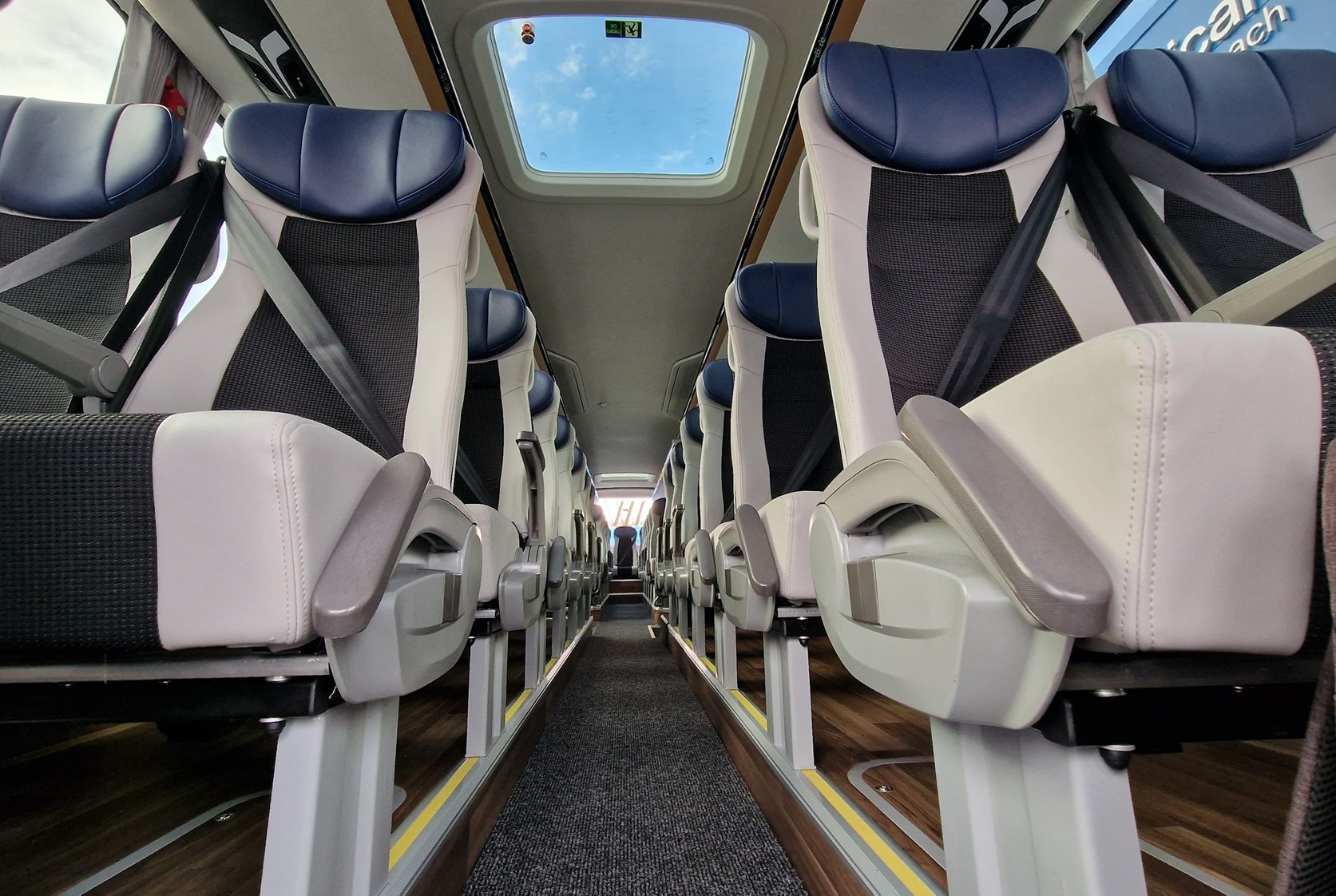
Planning, planning, and planning
Battery-electric power is a new concept to the coach industry, and there is still much work to be done before it can be adopted widely. Until all the pieces fall into place around public and roadside charging, Wattsway will retain some diesel coaches for longer-distance hires.
Nevertheless, Mark believes that electric is the future for his operation, but he stresses that a long-term view must be taken when planning such a shift. It has taken three years for Wattsway to reach three zero-emission coaches and lessons have been learned along the way.
Its location has been beneficial, given volumes of lower-mileage work available and a critical mass of customers who will pay the necessary rate – which, Mark is clear, is above that for a diesel coach.
“When we started eight years ago, Euro VI was already here, and we were straight into those vehicles. These shifts are not going to go away, and my view is that we need to stop worrying about them and get ahead of them,” he explains. “I ummed and aahed for a long time about a GTe14, but the more I thought about it, the more it made sense for our work.”
Making the shift to electric as a small business “is all about the planning,” Mark concludes. He is 100% certain that more zero-emission coaches will be seen in his fleet.





















